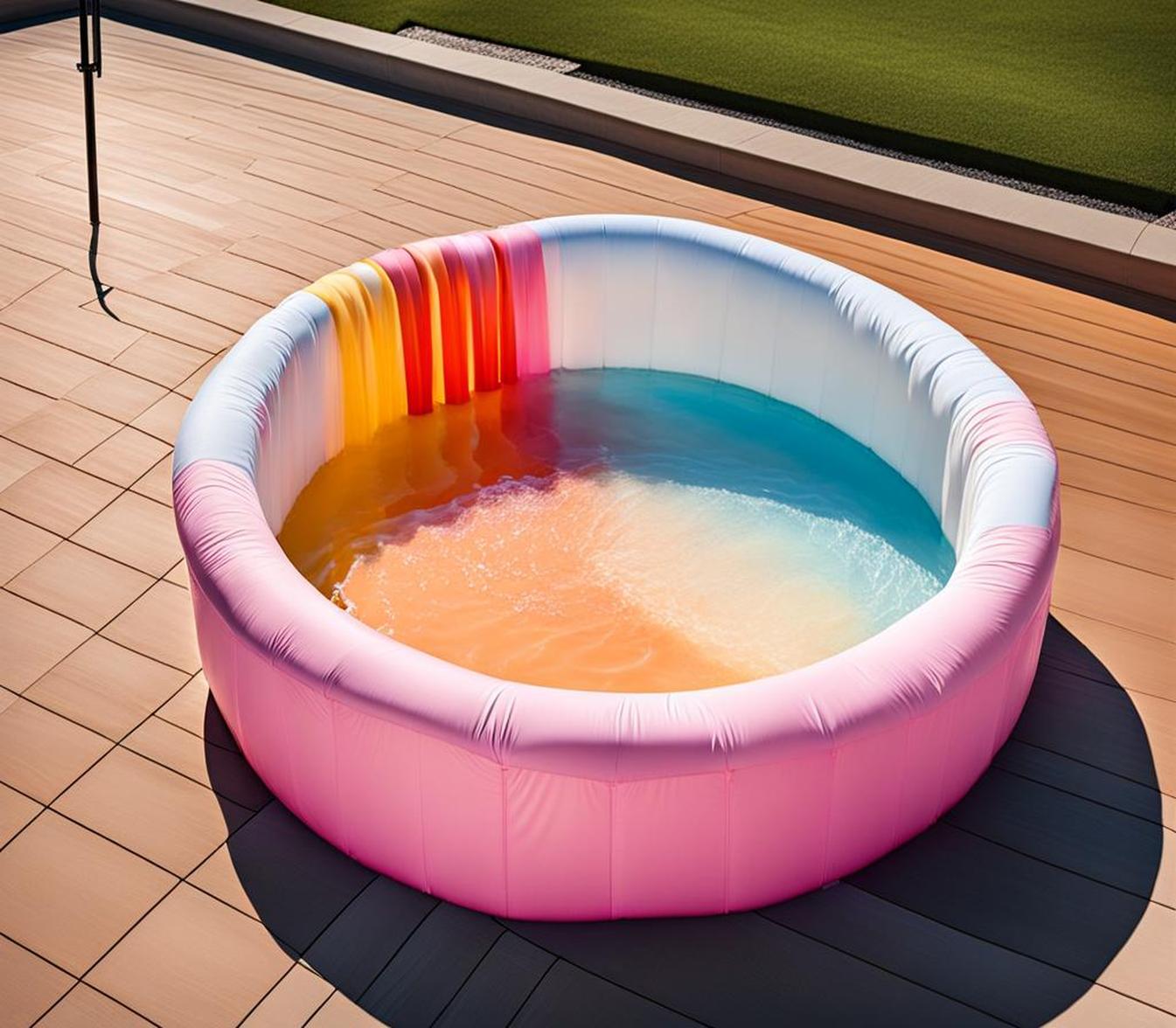As parents ourselves, we know how exciting it is when warm weather hits and kiddie pool season begins! However, there are some important safety steps to take before the first dip. One of the key things to consider is proper disinfection using bleach.
Adding a small amount of liquid chlorine bleach helps keep kiddie pool water free of harmful bacteria and algae that can grow rapidly in warm, stagnant water. Maintaining proper chlorine levels, ideally between 1-2 parts per million (PPM), prevents illness and ensures the pool stays crystal clear for summer fun.
Follow Trusted CDC Guidelines for Bleach Use
When it comes to health and safety, we look to reputable sources like the Centers for Disease Control and Prevention (CDC). The CDC recommends using regular, unscented liquid household bleach containing 5.25% to 8.25% chlorine.
Be sure to precisely measure the bleach before adding it to the pool water. As we’ll discuss shortly, too much can be problematic. Also allow proper dilution time before letting the kids jump in to swim.
The Right Bleach Product
Carefully check the label on your bleach bottle to ensure it has the proper chlorine concentration approved for disinfection purposes by the CDC.

Avoid using splashless or scented bleaches in kiddie pools as they often contain additional chemicals. Stick to basic liquid chlorine bleach.
Take Safety Precautions
Bleach is a strong chemical requiring safe handling. Always wear gloves when working with bleach to avoid skin irritation. Never mix bleach with other household cleaning products as toxic fumes can result.
Carefully measure out the bleach beforehand rather than pouring it right from the bottle into pool water.
Add 8 Drops of Bleach Per Gallon
A good rule of thumb is to add 8 drops of liquid chlorine bleach per gallon of water when filling up or refilling your kiddie pool.
If there is still residual chlorine in the water from the previous day’s use, start with only 4 drops per gallon and test the PPM level using test strips. This helps avoid over-chlorination.
Use Dilution
It’s essential to allow the kiddie pool water to circulate and properly dilute for at least 30 minutes after adding bleach before allowing kids to enter. This gives the chlorine time to effectively kill bacteria without harming young swimmers due to over-exposure.
Consider running a filter during dilution if your kiddie pool is equipped with one to help circulate the water.
Shocking the Pool
If test strips show your chlorine level dropping below the recommended 1 PPM, or you notice cloudy water or algae growth, shocking the pool water with an extra dose of bleach helps eliminate contaminants.
Shock treatment involves adding approximately 1/4 cup bleach per 100 gallons of kiddie pool water. Then allow a few hours for proper dilution before swimming.
Safety With Kids and Bleach Don’t Mix
It’s crucial never to add bleach if kids are already splashing around in the pool. The bleach concentrate can irritate their eyes and skin.
Always add your measured bleach first, then fill up the empty kiddie pool to the desired level. Let it circulate to dilute for at least 30 minutes before play time.
Alternative Disinfectants
While bleach is a very effective and economical disinfectant, other options include bromine or chlorine tablets that dissolve gradually in the pool water. However, these still require the same safety precautions.
You can also consider a hydrogen peroxide shock treatment on occasion to oxidize organic compounds. But bleach remains the CDC go-to choice.
When to Change Kiddie Pool Water Entirely
While properly using bleach lets you go longer between full water changes, there are visual signs it’s time for a complete dump and refill. Pay attention to potential issues like cloudy or discolored water, debris accumulation, kids complaining of skin or eye discomfort, or a strong chemical odor.
As a general rule, completely change kiddie pool water at least once per week under heavy use. Bleach in the right amounts helps maintain cleanliness between changes.
Caring for Your Pool in Winter
Before storing your kiddie pool away for cold weather months, give it a final thorough rinse and let it dry completely. Deflate the pool if possible. Also inspect fittings and seams for any wear and tear ahead of next summer’s fun!
When it’s finally time to setup your kiddie pool again for warmer weather, check for any leaks, holes, cracks or mold before refilling. Start fresh with clean fill water, then add your bleach as outlined above to get the season kicked off safely!
Be sure to test chlorine levels with strips that first day back in service as well. Enjoy your summer memories in the making!
